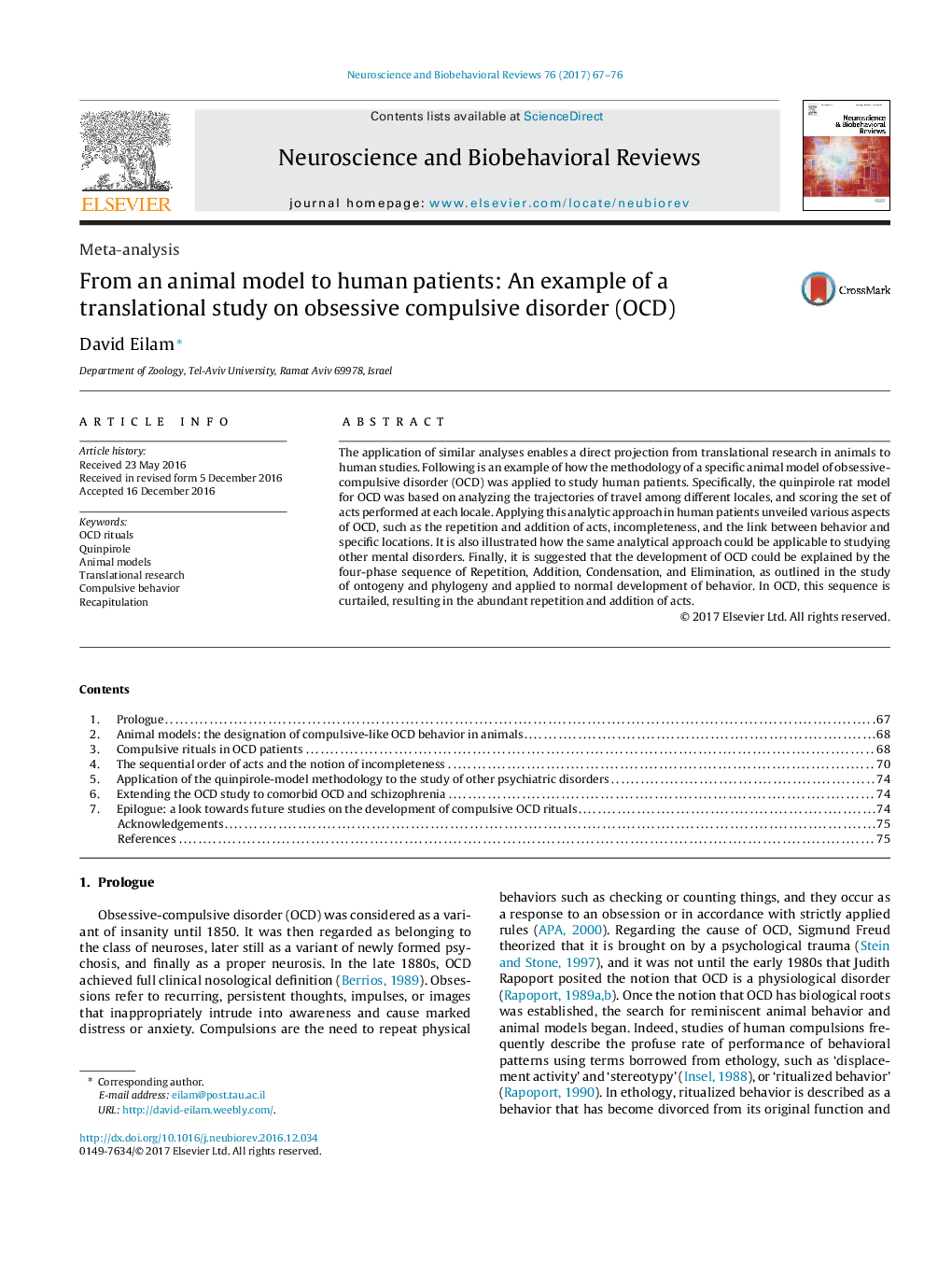| Article ID | Journal | Published Year | Pages | File Type |
|---|---|---|---|---|
| 5043669 | Neuroscience & Biobehavioral Reviews | 2017 | 10 Pages |
â¢Translational studies present methods also applicable to human studies.â¢Trajectories between places and sequence of acts were scored in the rat model for OCD.â¢The same approach was applied to the study of compulsive rituals in OCD patients.â¢Applying the same approach revealed various aspects of compulsive behavior.â¢This approach could be further applied in studying other mental disorders.
The application of similar analyses enables a direct projection from translational research in animals to human studies. Following is an example of how the methodology of a specific animal model of obsessive-compulsive disorder (OCD) was applied to study human patients. Specifically, the quinpirole rat model for OCD was based on analyzing the trajectories of travel among different locales, and scoring the set of acts performed at each locale. Applying this analytic approach in human patients unveiled various aspects of OCD, such as the repetition and addition of acts, incompleteness, and the link between behavior and specific locations. It is also illustrated how the same analytical approach could be applicable to studying other mental disorders. Finally, it is suggested that the development of OCD could be explained by the four-phase sequence of Repetition, Addition, Condensation, and Elimination, as outlined in the study of ontogeny and phylogeny and applied to normal development of behavior. In OCD, this sequence is curtailed, resulting in the abundant repetition and addition of acts.
